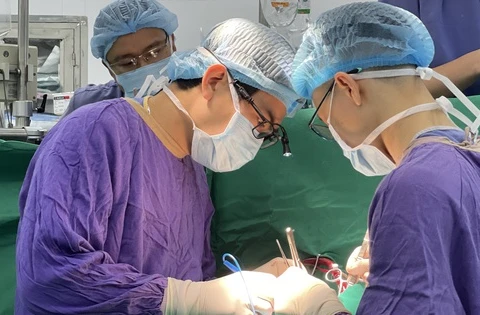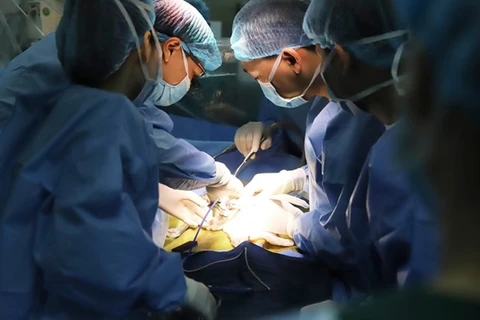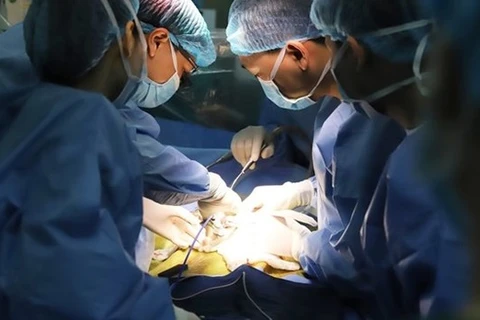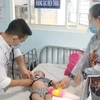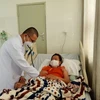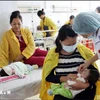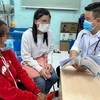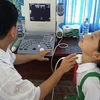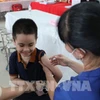
HCM City (VNA) - Children's Hospital No.2 in Ho Chi Minh City has recently performed a liver transplant for a three-year-old child with Budd-Chiari syndrome, a rare vascular disorder occurring in only 1 in 1,000,000 people.
This is the first liver transplant for a child with the syndrome in Vietnam and the 36th liver transplant performed at Children's Hospital No. 2.
According to Dr. Nguyen Hong Van Khanh, deputy head of the Hepatobiliary and Transplantation Department, the three-year-old girl from south central Binh Thuan province was diagnosed with Budd-Chiari syndrome, which caused the veins that carry blood away from the liver to become narrowed or blocked.
Before the liver transplant, the child experienced multiple episodes of gastrointestinal bleeding, requiring several hospitalisations for internal treatment, Khanh said.
By early this year, the child had progressed to cirrhosis and liver failure, necessitating a liver transplant, she added.
During the transplant, the doctors identified that the child had a high risk of developing post-transplant blood clots and would require prolonged anticoagulant therapy.
The presence of extensive collateral circulation made the surgery complex. Moreover, abnormalities in the inferior vena cava required vascular reconstruction during the procedure.
Eight days post-transplant, the child could eat orally without support and is gradually recovering.
Dr. Bui Hai Trung, deputy head of the Hepatobiliary and Transplantation Department, said such liver transplants are rare not only in Vietnam but also worldwide.
Performing this transplant was highly risky, Trung said, adding that the success of the procedure heavily depended on the connection of the hepatic artery, as post-transplant hepatic artery thrombosis can result in a 20% mortality rate.
The first paediatric liver transplant at Children's Hospital No.2 was performed back in May 2005.
Initially, the number of liver transplants was limited due to constraints in manpower and equipment. Additionally, organ transplantation activities, including liver transplants, were interrupted due to external conditions.
Post COVID-19, the hospital intensified its paediatric liver transplant activities.
To date, the hospital has performed 36 liver transplants and 30 kidney transplants.
By April 30, 2025, the hospital aims to inaugurate the Southern Regional Paediatric Transplant Centre, expanding to heart transplants for children, alongside regular liver, kidney, and stem cell transplants.
Dr. Pham Ngoc Thach, Deputy Director of Children's Hospital No.2, noted that about 200 children with liver failure are awaiting transplants at the hospital, with 20 already having identified donors.
Unlike children with kidney failure who have alternative treatment options, children with liver failure rely solely on liver transplants for survival.
The waiting period for a liver transplant in children is considered the "golden time"; failure to receive a transplant within this period results in death. Tragically, many children have not survived the wait for a liver transplant.
Therefore, until the establishment of the Paediatric Transplant Centre, Children's Hospital No.2 will continue to enhance its liver transplant programme to save more children./.
